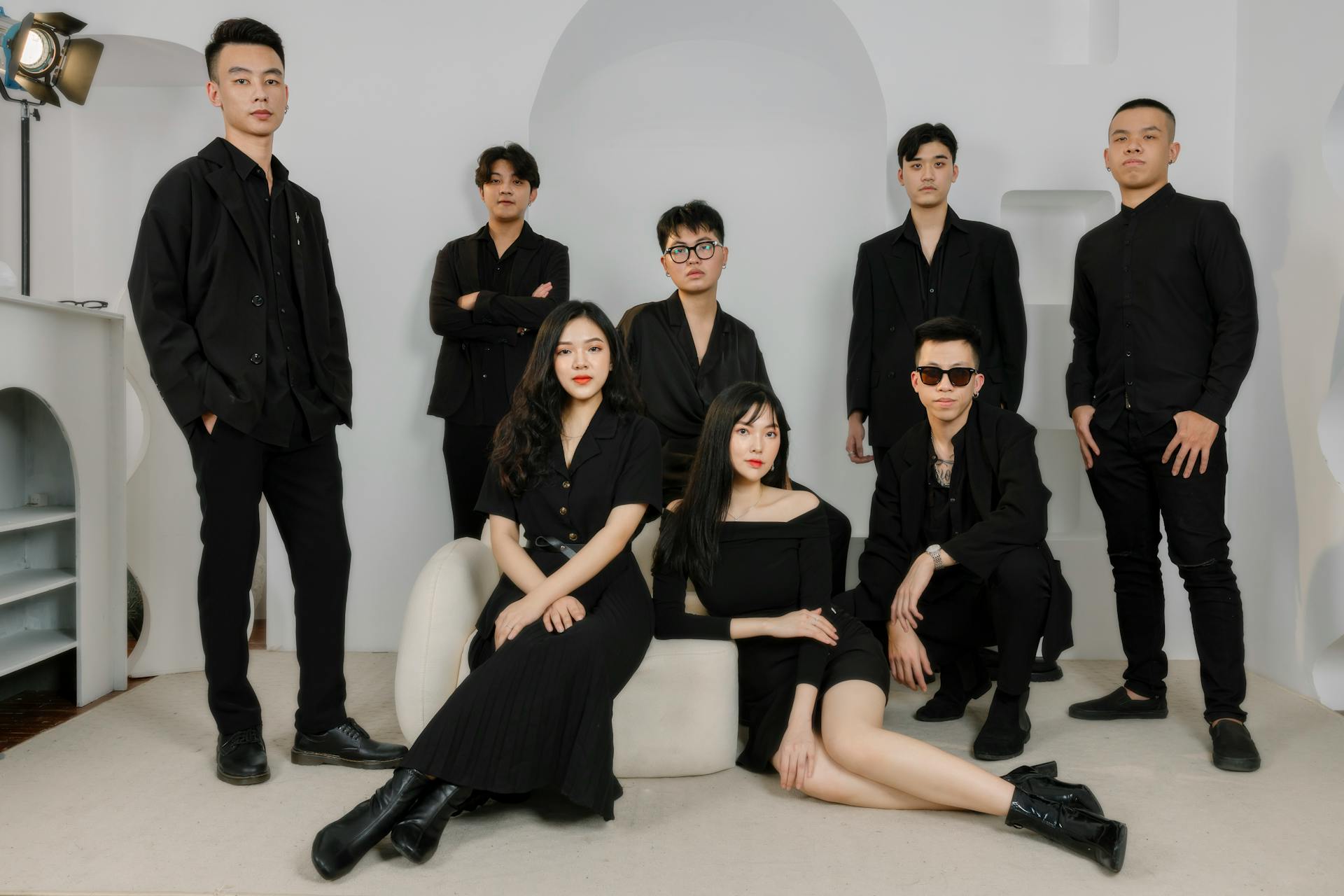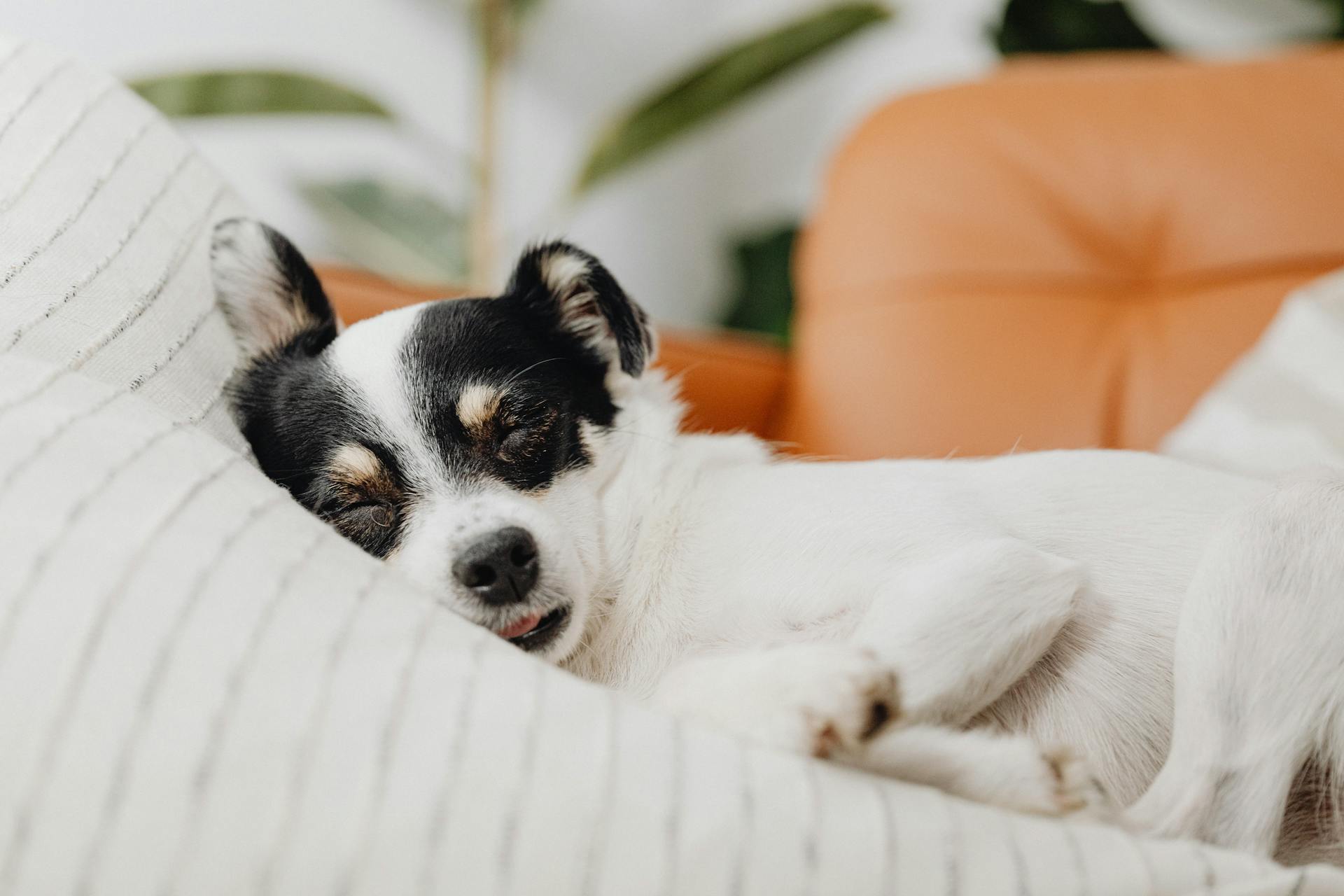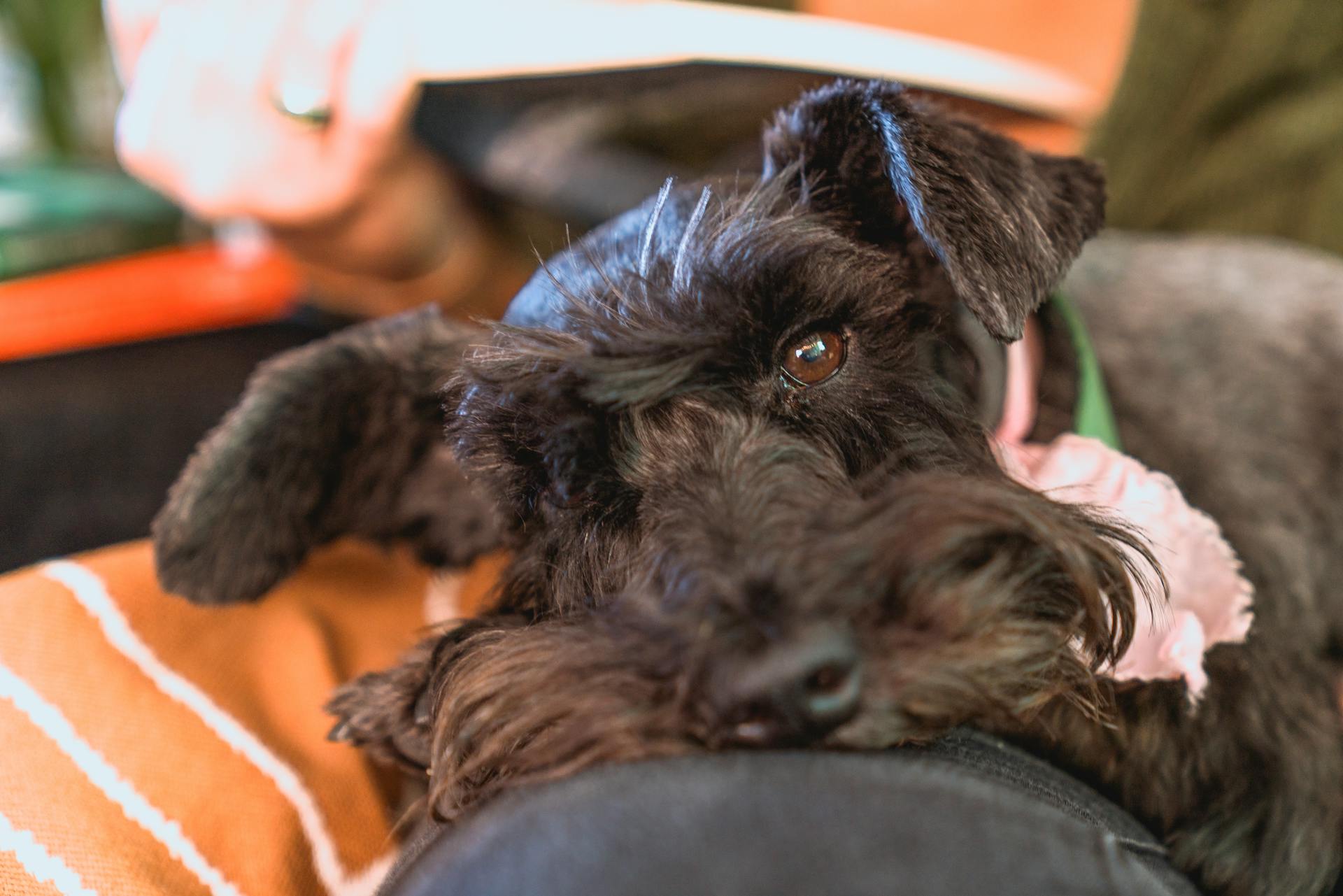
The Bluetick Coonhound and the Black and Tan Coonhound are two breeds that have been used for hunting and tracking for centuries. They're both part of the Coonhound family, known for their keen sense of smell and energetic personalities.
Both breeds are medium to large in size, with the Bluetick Coonhound weighing between 45-65 pounds and the Black and Tan Coonhound weighing between 50-75 pounds.
In terms of grooming, both breeds have short, smooth coats that require minimal maintenance. They're also relatively healthy breeds, with an average lifespan of 10-12 years.
Whether you're a seasoned hunter or a first-time dog owner, these breeds are sure to bring excitement and enthusiasm to your life.
History
The Bluetick and Black and Tan Coonhound have a rich history that dates back centuries.
The Bluetick is likely descended from quick foxhounds of England with some introduction of French hounds, known for their cold noses.
George Washington received five French hounds from General Lafayette, which were likely used for hunting big game.
The Blueticks were originally registered with the UKC as English, but were later registered as a separate breed in 1946 at the request of Bluetick fanciers.
The Black and Tan Coonhound is an all-American breed with ancestors that sailed across the pond following the American Revolution.
These early iterations were a mix of English hounds, possibly including bloodhounds and foxhounds, as well as other breeds like the Kerry beagle and the Grand Bleu Gascogne.
The breed was refined and perfected in the States to be the ultimate American hunting dog for the working class.
They were used to "tree" raccoons, meaning they chased their prey up a tree and barked, alerting their human hunting partners as to where the coons were cornered.
The Black and Tan Coonhound was officially recognized by the United Kennel Club in 1912 and the American Kennel Club registered the breed shortly after, in 1945.
For more insights, see: American Kennel Club Lancashire Heeler
Physical Characteristics
The Bluetick Coonhound's head is broad between the ears, with a slightly domed skull, and a total length of 9 to 10 inches in males and 8 to 9 inches in females. The muzzle from the stop to the end of the nose should be well proportioned in width with the skull.
Broaden your view: Boston Terrier Skull
Their chest should show considerable depth, rather than excessive width, to allow plenty of lung space. The girth of the chest for males is 26 to 34 inches, and for females it's 23 to 30 inches.
Their height at the withers for adult males is not less than 22 inches or more than 27 inches, and for females it's not less than 21 inches or more than 25 inches.
Appearance
The Bluetick Coonhound is a beautiful breed with a unique appearance. The head is broad between the ears, with a slightly domed skull.
Their muzzle from the stop to the end of the nose should be well proportioned in width with the skull, with depth of flews well covering the lower jaw. Depth of foreface should be 3 to 4½ inches.
The Bluetick Coonhound has a neat body that is well proportioned, not clumsy or chunky in build. They have a glossy coat, and clear, keen eyes, with a typical pleading hound expression.
Broaden your view: American Bully Skull
Their tail is set on slightly below the line of the back, strongly rooted, and tapering to a moderate length. In balance to the overall length of the hound, it's carried gaily, with a slight curve or parallel to ground.
Black and tan coonhounds are typically 23–27 inches tall at the shoulder and can weigh up to 110 pounds. Their deep black coat is short and dense over their muscular frame, with tan accents on their eyebrows, muzzle, chest, legs.
The chest should show considerable depth, rather than excessive width, to allow plenty of lung space. Girth of chest for males is 26 to 34 inches, for females 23 to 30 inches.
Their height at withers for adult males is not less than 22 inches or more than 27 inches, while for females it's not less than 21 inches or more than 25 inches. Ideal weight for males is 55 to 80 pounds, while for females it's 45 to 65 pounds.
Their color is a dark blue, thickly mottled body, spotted by various shaped black spots on back, ears, and sides. Preference is to more blue than black on body, with or without tan markings.
Related reading: Straight Back German Shepherds
Forequarters
The forequarters of a Bluetick Coonhound are a sight to behold. Shoulders should be clean and sloping, giving the appearance of freedom of movement and strength.
A muscular build is essential, but it's just as important to avoid broad or rough shoulders. This will give the dog a powerful yet agile look.
The forequarters should appear to be strong and capable of effortless movement.
Breed Information
The Bluetick Coonhound is a breed that's known for its intelligence and versatility. It has a mottled, or ticked black-and-blue, glossy coat.
This breed wants to please its owner and stands out as a loyal companion. They're sensitive and colorful, making them a great addition to many families.
The Bluetick Coonhound is a natural athlete and enjoys performance sports. With positive training, they'll engage in obedience, agility, AKC Rally, and Fast CAT.
American English Coonhound
The American English Coonhound is a sleek and muscular breed, descended from English Foxhounds brought to America in the early 1800s.
This breed is known for its speed and endurance, making it a popular choice for hunting and tagging small animals like raccoons.
The American English Coonhound's hallmark is its ticking coat pattern in red and white, blue and white, or tricolored.
They stand 24 to 26 inches at the shoulder for males and 23 to 25 inches for females, and weigh 45 to 65 pounds.
This breed is affectionate with their family and content to relax at home, but ready to chase any small animal crossing their path.
The American English Coonhound was recognized by the AKC in 2011.
Black and Tan Coonhound
The Black and Tan Coonhound is a large breed of hound dog, with males standing 27 inches tall at the shoulder and females ranging from 23 to 25 inches. They weigh between 65 to 110 pounds.
This breed has a distinctive coal-black coat with tan accents and pumpkin seeds above their expressive eyes. They have a sweet disposition at home and appreciate mental and physical exercise to stay happy.
Black and Tan Coonhounds are intelligent and have a high prey drive, making them a great fit for families who enjoy hiking and the outdoors. They are also good with children and other dogs.
Here's a quick rundown of their key characteristics:
As a breed, they are relatively easy to groom and require occasional shedding. They are also prone to health issues, so regular veterinary check-ups are essential. With proper care and attention, however, they make wonderful companions for active families.
Family and Training
Coonhounds are a great fit for families with kids, but it's essential to remember that they can be a bit clumsy and might accidentally knock over or run over young children.
They're typically very patient and cooperative with kids, but it's crucial to supervise interactions closely. If you're considering a Coonhound as a family pet, be prepared to take extra precautions to ensure everyone's safety.
Coonhounds are not as easily trainable as some other breeds, but they're not stubborn either - they're just driven by their noses and can get single-minded when tracking quarry.
Curious to learn more? Check out: Boston Terrier Good with Kids
Family
The Coonhound is a great breed for families with kids, but it's essential to remember that they can be a bit clumsy, so young children need to be supervised closely to avoid getting knocked down or run over.
Coonhounds are typically very patient and cooperative with children, which is why they're often viewed as a great addition to families with kids.
Take a look at this: Are Basset Hounds Good with Kids
Training
Coonhounds are not naturally eager to please, unlike breeds like Labradors or Shepherds.
Their single-minded focus on hunting or tracking can be a challenge for owners to manage.
They will show stubbornness, but it's essential to recognize and understand their body language to deter hunts before they begin.
"Nose deafness" is a common issue for Coonhound owners, where the dog becomes so focused on a scent that they tune out their owner's commands.
This behavior is not a problem, but rather a natural aspect of the breed's nature.
If you're used to dogs that respond to commands despite interesting scents, a Coonhound might not be the best fit.
Care and Temperament
These dogs are friendly, laid-back, and social, making them a great fit for active families or homes with plenty of room to exercise their lanky legs.
Their high prey drive means they may not be good with cats, birds, or pocket pets, but they tend to get along well with other dog siblings.
Black and tan coonhounds can be a little reserved or shy around strangers, but socializing your puppy will help him be more confident and friendly.
They take a surprisingly long time to mentally mature, up to three years, so be patient with your pup's development.
Their grooming needs are relatively low-maintenance, requiring only a weekly brush and occasional bath to keep them looking their best.
Their ears are prone to infections, so cleaning them weekly with a pH-balanced ear cleanser is essential.
Regular exercise is crucial, with at least an hour of vigorous exercise daily, but high-impact exercise should be avoided until they're 2 years old to prevent damage to their growth plates.
You might enjoy: 100 Years Ago Original Boston Terrier
Care
Grooming a black and tan coonhound is a breeze - just brush him twice a week with a hound mat or stiff bristle brush.
Their short fur sheds minimally year-round, but regular brushing keeps it under control.
Black and tan coonhounds need their nails trimmed regularly and their teeth brushed consistently.
Their ears, being long and floppy, are prone to infections, so clean them weekly with a pH-balanced ear cleanser.
After a swim, clean their ears to absorb extra moisture that can lead to yeast infections or other issues.
These dogs require at least an hour of vigorous exercise each day.
Black and tan coonhound puppies can play and romp around as they please, but high-impact exercise should be avoided.
Don't take them jogging until they're 2 years old, as excessive pounding on their growth plates can cause damage.
Consistent training is key, starting early and continuing throughout their lives.
Positive reinforcement, working with a professional trainer, and puppy kindergarten can help with training.
Their prey drive and need to wander can be a challenge, so be patient and persistent.
Keeping their attention during training sessions might be tough due to their strong sense of smell.
Temperament
Black and tan coonhounds are known for their friendly, laid-back, and social nature. They love being around people and are patient and calm around children, making them a great fit for active families.
They have a high prey drive, which means they may not be good with cats, birds, or small pets. This is because they were bred to hunt.
These dogs can be a little reserved or shy around strangers, but socializing them from an early age can help them become more confident and friendly.
Frequently Asked Questions
Are bluetick Coonhounds good house dogs?
Yes, Bluetick Coonhounds can make great house dogs, but they do require regular exercise and a securely fenced yard to prevent wandering.
What is the friendliest coonhound?
Bluetick Coonhounds are known for their friendly nature, making them a great choice for families and multi-pet households
What two dogs make a Bluetick Coonhound?
The Bluetick Coonhound is a cross between the Grand Bleu de Gascogne hound and the English Foxhound. This unique blend of breeds gives the Bluetick Coonhound its distinctive characteristics and abilities.
Are bluetick Coonhounds clingy?
Bluetick Coonhounds are deeply affectionate and devoted to their owners, often craving attention and interaction. If neglected, they can develop clingy behaviors, such as excessive barking, due to their strong prey drive and need for mental stimulation.
Featured Images: pexels.com


